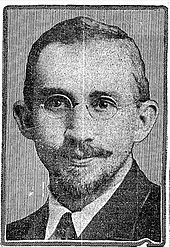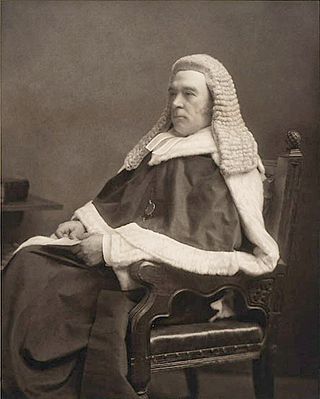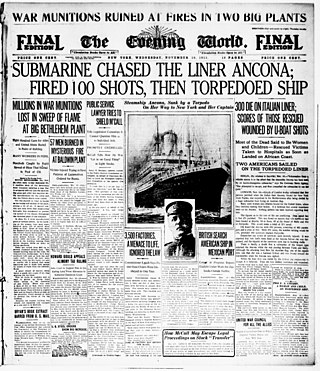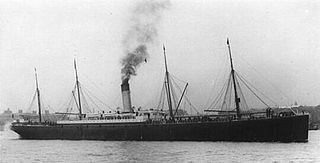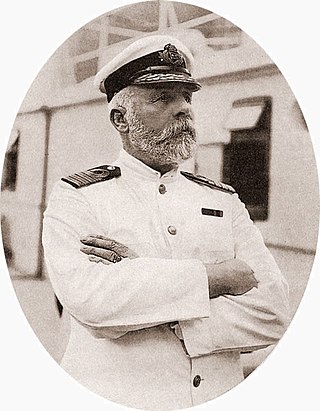Background
On 28 January 1915 a German merchant raider captured and scuttled the US sailing ship William P. Frye. On 4 February Germany declared a war zone around the British Isles, in which all ships would be targeted. The Imperial German Navy's 30 submarines then began attacking all ships, whether belligerent or neutral. They had secret orders to spare US ships, but mines in the North Sea sank US steamships on 21 and 22 February. [1] [2]
The United Kingdom responded by tightening its blockade of Germany, including food. The UK Admiralty ordered ships to steer away or to ram any submarine that they encountered, and not to zigzag.
The US government, led by President Woodrow Wilson and Secretary of State William Jennings Bryan, protested to the German government on 10 February. Wilson and Bryan called the German intention "an act so unprecedented in naval warfare" and that the US would hold the Germans to "a strict accountability for such acts of their naval authorities."
Falaba
On 27 March 1915 Elder Dempster Lines' Falaba left Liverpool for West Africa. She had a crew of 95 and 151 passengers. The passengers included 30 British Army officers on their way to prepare for the Kamerun campaign, 70 Colonial Service officers, [11] and Leon Thrasher. [12] [13] Her cargo included 13 tons of cartridges and gunpowder. According to the inquiry this was a normal peacetime cargo for the ship.
At 11:40 hrs on 28 March Falaba's Chief Officer, Walter Baxter, sighted U-28 in St George's Channel. Falaba's Master, Captain Frederick J Davies, ordered his ship to steer away at full speed. However, U-28 outran Falaba, and Davis sent a wireless wireless telegraph message to that effect at 11:50, describing the submarine as falsely flying a British flag. Later he would observe that this is not the case, though it is unclear if he was initially mistaken or if the Germans had now hoisted their true colours. The submarine ordered "Stop or I will fire", so Davies ordered the engine to be shut off. U-28's commander Kapitänleutnant Georg-Günther von Forstner, then hailed the ship through a megaphone, ordering them to abandon ship at around noon, as it was to be sunk in ten minutes (five according to the British inquiry). The captain replied saying he was taking to the boats, and a second radio message was sent. According to the subsequent British inquiry, the ship stopped moving at around five minutes after noon. The evacuation was disorganized due to the short amount of time given, which meant not all the lifeboats were launched. One torpedo was launched at 10 minutes after noon, striking the ship amidships, and Fabala sank quickly in eight minutes. [15] The overall time given to evacuate is disputed even today, with 5, 10, and 23 minutes given as possible numbers.
104 were lost of the 242 on board. Thrasher was among the people killed in the incident. He was the first US citizen to be killed by the action of a German submarine.
Aftermath
Falaba was the second British passenger ship that U-28 had sunk in as many days. On 27 March it had sunk Yeoward Brothers' steamship Aguila, also with considerable loss of life. U-28 was reported to have fired its deck gun at Aguila, inflicting casualties, including as her passengers and crew were abandoning ship. [18]
Wilson thought U-28 had violated international law, the key point being the short amount of time given to evacuate the ship, but Bryan questioned "whether an American citizen can, by putting his business above his regard for his country, assume for his own advantage unnecessary risks and thus involve his country in international complications."
Wilson had Counselor Robert Lansing draft a diplomatic complaint to the Germans:
The Government of the United States has received a report, confirmed by substantial evidence, that Leon C. Thrasher, a native born American citizen, came to his death by reason of the act of the German naval authorities in sinking the British passenger steamer Falaba on the high seas on the 28th of March, 1915, outward bound from Liverpool, and the failure of the commander of the German submarine U–28 to give ample time for the crew and passengers of the Falaba to leave the vessel before sinking her by means of torpedoes. It is further reported that, at the time when the Falaba was torpedoed and sunk, she was lying to, making no attempt to escape and offering no resistance.
[...]
It sincerely hopes that the Imperial Government, recognizing the justice of these representations, will promptly disavow the act complained of and take the steps necessary to prevent its repetition.
—
Robert Lansing, April 5 1915 [20]
Bryan advised Wilson to not send a note in such bellicose terms, and had Lansing redraft the note. It was noted that only one American was killed, thus grounds for a legal protest was weak. The decision was made to leave off a formal protest for the time being, as Thrasher may be simply an isolated incident. [21]
Two attacks followed: one, an air attack on the Cushing, and then a submarine attack on an American tanker, the Gulflight. On 7 May a U-boat sank RMS Lusitania. The incident was a great deal more severe, as the U-boat had this time attacked with no warning at all. Many people, including over a hundred US citizens, died in the shipwreck. The US sent a diplomatic note to Germany asking for an apology and reparations for both ships. The note included a warning that the US would take "any necessary act in sustaining the rights of its citizens or in safeguarding the sacred duties of international law."
The Lusitania sinking brought up the Thrasher case again. The Germans claimed that they had given the ship ample time to evacuate (10 minutes, extended to 23), and that they had been forced to sink the ship due to the approach of "suspicious vessels". This point was brought up by Bryan in his discussions with Wilson. [22] The German government also contended that if a merchant ship tries to escape capture and seek assistance, that alters the duty of the commander of the attacking vessel to try to ensure the safety of non-combatants aboard the merchant ship, even after the ship subsequently stops and ceased resistance. The US government rejected this contention. [23]
Thrasher's body washed ashore on the coast of Ireland on 11 July 1915, after it had been in the sea for 106 days. At first, authorities mistook him for a Lusitania victim and designated him Body No. 248.
During the subsequent British inquiry led by Lord Mersey, which ended in July, one of the passengers was angry at the "bungled" evacuation, alleging that had the crew been well organized and the passengers well led, all of those on the ship could have been safely evacuated before the torpedo was fired. The passenger thus blamed Elder, Dempster, their Marine Superintendent and his brother-in-law Fred Davies for the loss of life. Mersey ultimately found that the ship only had five minutes to evacuate, thus placing all of the blame on the U-boat captain. Many later authors suspect the true amount of time given to evacuate was likely around 10 minutes, in between the British and German claims. Journalist and Lusitania conspiracy theorist Colin Simpson claims the torpedo may have detonated the Falaba's cargo, but the inquiry at the time did not believe this was an issue.
